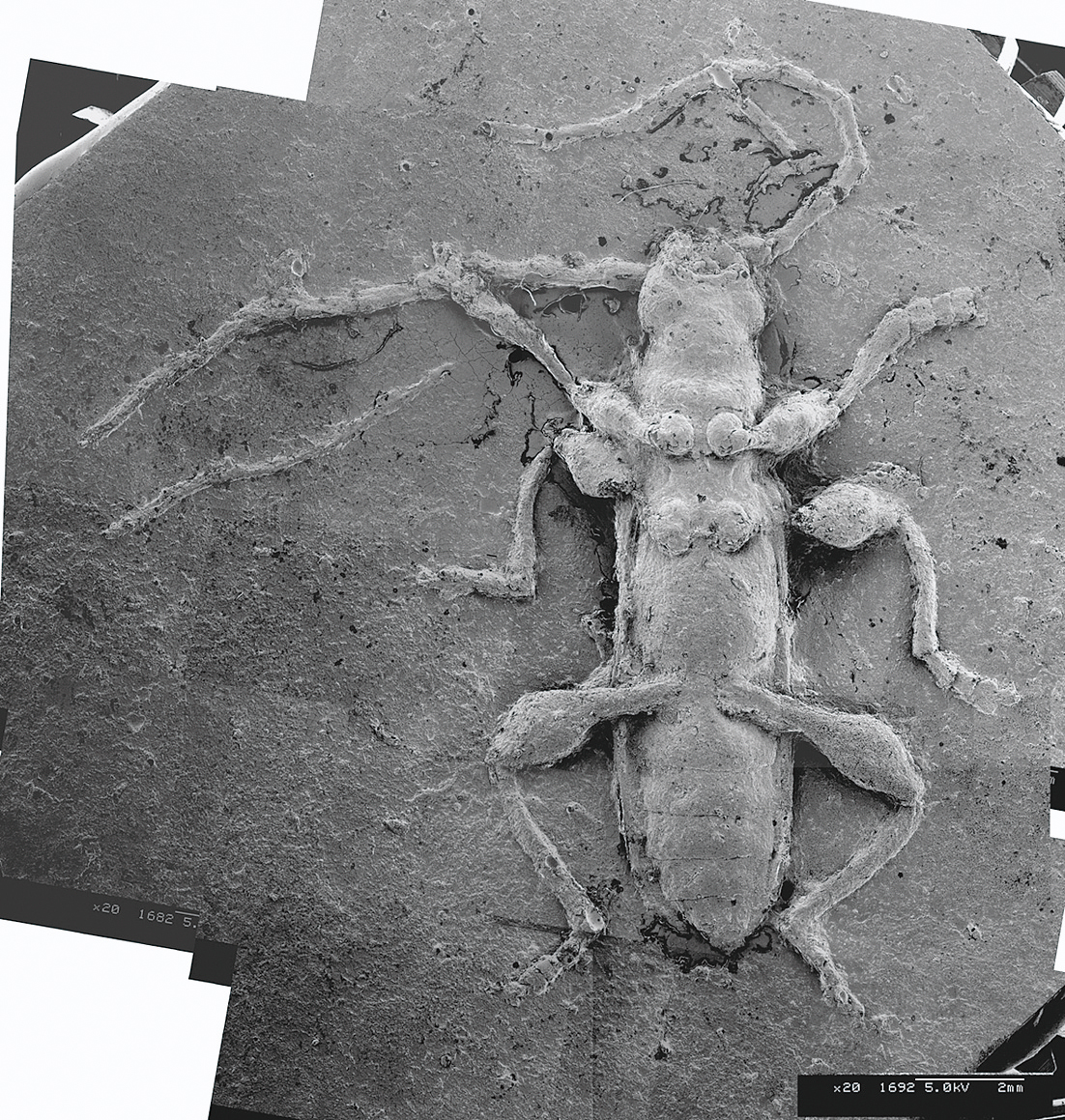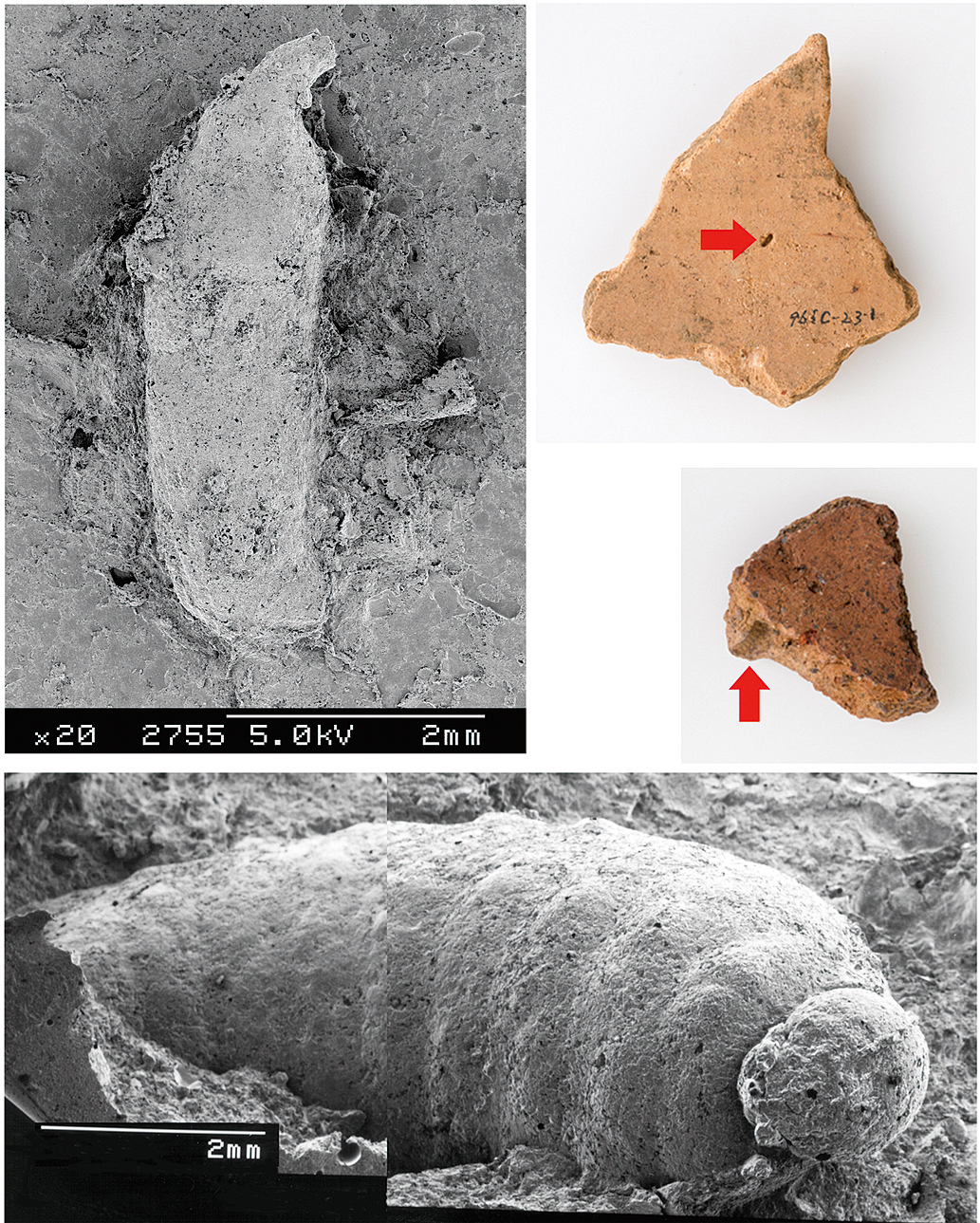C9
Impressions of insects on pottery
reconstructing palaeoenvironments by replica method
Fabric of pottery often included accidental impressions, such as fragmented plants, bones and insects. They provide rich information for reconstructing the palaeoenvironment. To observe them, replica method is recently adopted, which enables to identify the detailed forms in microscopic level. Potsherds and their replicas described here show impressions of insects. A potsherd in late Jomon Period from Ishigamidai archaeological site has an impression of maize weevil (Sitophilus zeamais), a harmful insect attacking cereals. Such replica demonstrates that maize weevil lived in Japanese Archipelago before rice-paddy cultivation was first introduced. A late-final Jomon potsherd recovered from Mogurou site has an impression of a larva of chestnut weevil (Curculio sp.). It suggests that this pottery was made in autumn, when this weevil attacked nuts. In 1970’s, a potsherd with an impression of a longhorn beetle was recovered from Nakao site (9th century AD). Nowadays, applying replica method to it, the identification to species is possible (Stenygrinum quadrinotatum). (Takahiro Odaka)
References
丑野 毅・田川裕美(1991)「レプリカ法による土器圧痕の観察」『考古学と自然科学』24:13–36。


